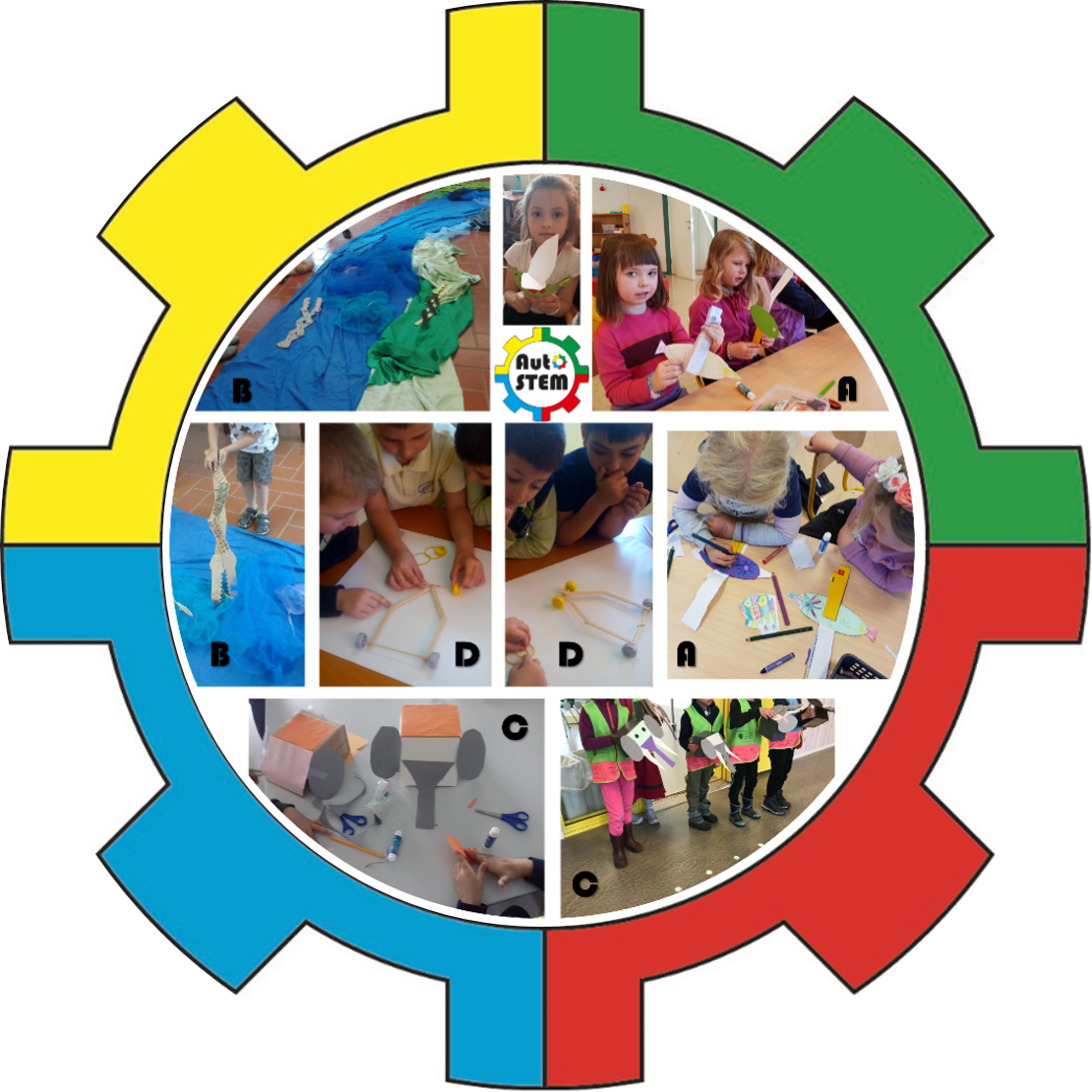In everyday life, we share our experiences because it is delightful; as the proverb
states, “A joy shared is a joy doubled.” In the context of experiential learning, the
purpose of sharing experiences is to discuss them with our peers to reflect
on them together. This reflection is essential for mathematical learning. Children have to
reflect on their actions to develop mathematical insight. It is not enough
to just do something. Only when we reflect on our actions and observations can we discover patterns – and this is what mathematics and science are about.
It is the teacher’s task to stimulate children to wonder, reflect, and search
for patterns. This can be done by asking open-ended questions, that is, a question
that cannot be answered by just recalling what you already know.
Open questions related to automata are, “How does it work?”, “What does it do?”, “How can it move?”, “What is it good for?”, “How can we use it?”, “How can we build this?”, just to mention some examples. The questions stimulate the children to investigate and reflect on the mechanisms and the automata’s features and structure. Finally, the children will have
an “experience of thought” (Dewey, 1934, p. 37), that is, an experience that does not
involve physical action and perception, but that happens when we reach or draw a
conclusion.
Questions for reflection
Borton (1970, p. 88) illustrates the processing with the question “So what?” which
is about “transforming the information into immediately relevant patterns of
meaning.” Teachers can use the reflective questions given in module 4 and the pedagogical materials when reflecting on automata and STEM content. Here are some more examples.
- So what characteristics of the Dancing Doll and the activity do you think were important to provoke the children’s exploration and thinking?
- So what mathematical concepts are the children discovering when playing with the Snapping Crocodile?
- So what do you think the role of the ruler is when building the Balloon Car?
- So in what ways might children’s embodied actions contribute to their understanding of murmuration when playing with the Jelly Bird?
- So what skills, knowledge, and understandings do teachers need in order to be able to effectively identify and respond to opportunities to support mathematical thinking and learning in spontaneous play situations with the Catapult?

